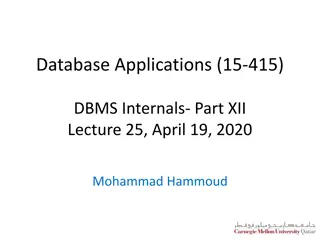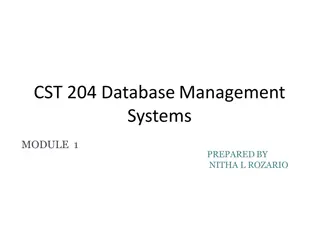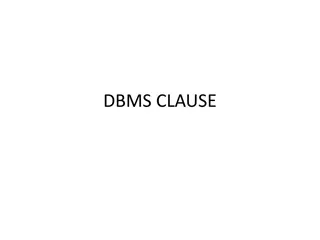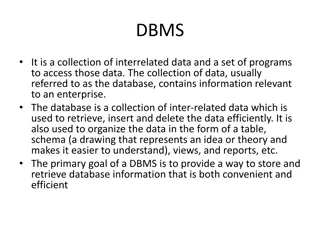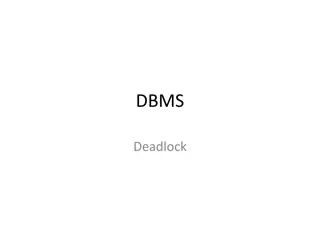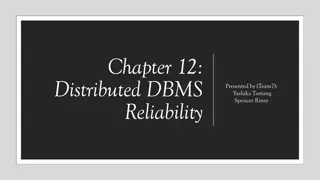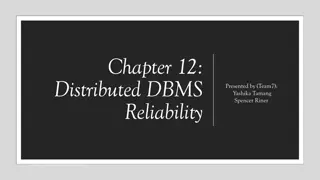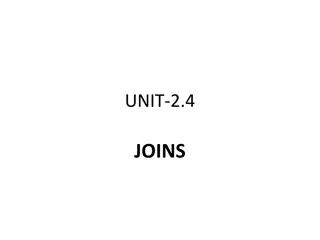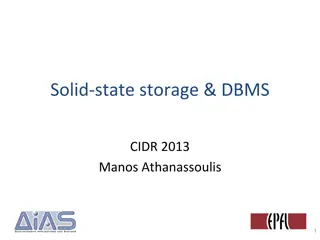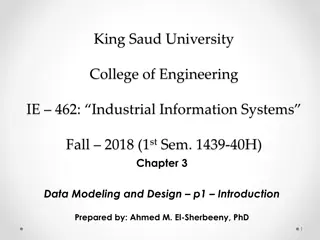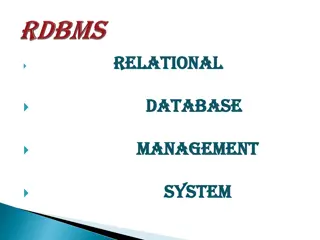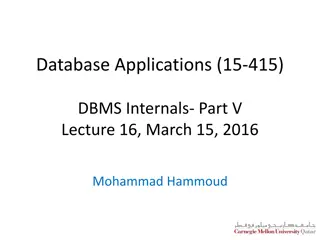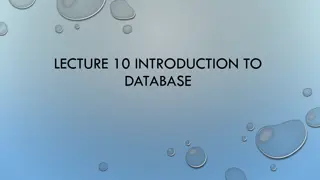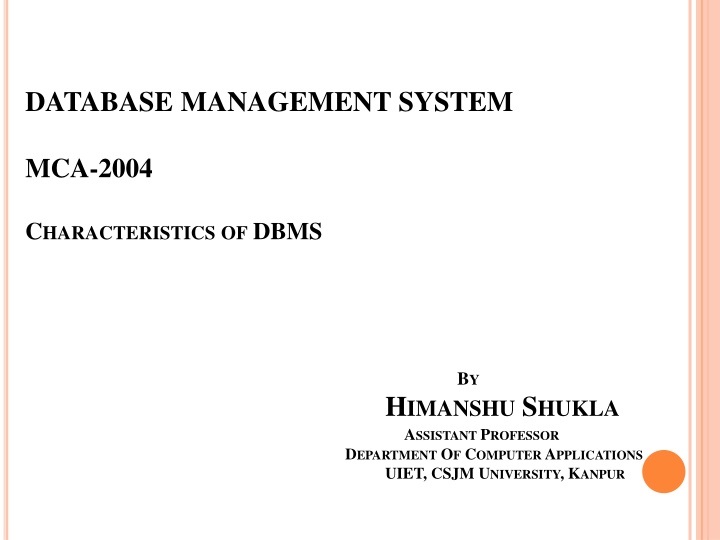
Key Characteristics of Database Management Systems
"Explore the characteristics of DBMS - from data organization to real-world entities, isolation, consistency, and more. Understand how modern DBMS structures data efficiently for easy retrieval and manipulation."
Download Presentation

Please find below an Image/Link to download the presentation.
The content on the website is provided AS IS for your information and personal use only. It may not be sold, licensed, or shared on other websites without obtaining consent from the author. If you encounter any issues during the download, it is possible that the publisher has removed the file from their server.
You are allowed to download the files provided on this website for personal or commercial use, subject to the condition that they are used lawfully. All files are the property of their respective owners.
The content on the website is provided AS IS for your information and personal use only. It may not be sold, licensed, or shared on other websites without obtaining consent from the author.
E N D
Presentation Transcript
DATABASE MANAGEMENT SYSTEM MCA-2004 CHARACTERISTICS OF DBMS BY HIMANSHU SHUKLA ASSISTANT PROFESSOR DEPARTMENT OF COMPUTERAPPLICATIONS UIET, CSJM UNIVERSITY, KANPUR
CHARACTERISTICS OF DBMS Database is a collection of related data and data is a collection of facts and figures that can be processed to produce information. Mostly data represents recordable facts. Data aids in producing information, which is based on facts. For example, if we have data about marks obtained by all students, we can then conclude about toppers and average marks. A database management system stores data in such a way that it becomes easier to retrieve, manipulate, and produce information.
Traditionally, data was organized in file formats. DBMS was a new concept then, and all the research was done to make it overcome the deficiencies in management. Relational database management system is also helpful for finding actual relationship with entity. traditional style of data
CHARACTERISTICS Real-world entity Relation-based tables Isolation of data and application Less redundancy Consistency Query Language ACID Properties Multiuser and Concurrent Access Multiple views Security
Real-world entity A modern DBMS is more realistic and uses real-world entities to design its architecture. It uses the behavior and attributes too. For example, a school database may use students as an entity and their age as an attribute. Relation-based tables DBMS allows entities and relations among them to form tables. A user can understand the architecture of a database just by looking at the table names.
Isolation of data and application A database system is entirely different than its data. A database is an active entity, whereas data is said to be passive, on which the database works and organizes. DBMS also stores metadata, which is data about data, to ease its own process. Less redundancy DBMS follows the rules of normalization, which splits a relation when any of its attributes is having redundancy in values. Normalization is a mathematically rich and scientific process that reduces data redundancy.
Consistency Consistency is a state where every relation in a database remains consistent. There exist methods and techniques, which can detect attempt of leaving database in inconsistent state. A DBMS can provide greater consistency as compared to earlier forms of data storing applications like file-processing systems. Query Language DBMS is equipped with query language, which makes it more efficient to retrieve and manipulate data. A user can apply as many and as different filtering options as required to retrieve a set of data. Traditionally it was not possible where file- processing system was used. ACID Atomicity, shortened as ACID). These concepts are applied on transactions, which manipulate data in a database. ACID properties help the database stay healthy in multi-transactional environments and in case of failure. Properties Consistency, DBMS follows the Isolation, concepts of Durability and (normally
Multiuser and Concurrent Access DBMS supports multi- user environment and allows them to access and manipulate data in parallel. Though there are restrictions on transactions when users attempt to handle the same data item, but users are always unaware of them. Multiple views DBMS offers multiple views for different users. A user who is in the Sales department will have a different view of database than a person working in the Production department. This feature enables the users to have a concentrate view of the requirements. database according to their
Security Features like multiple views offer security to some extent where users are unable to access data of other users and departments. DBMS offers methods to impose constraints while entering data into the database and retrieving the same at a later stage. DBMS offers many different levels of security features, which enables multiple users to have different views with different features. For example, a user in the Sales department cannot see the data that belongs to the Purchase department. Additionally, it can also be managed how much data of the Sales department should be displayed to the user. Since a DBMS is not saved on the disk as traditional file systems, it is very hard for miscreants to break the code.
REFERENCES ELMASRI, Fundamentals Pearson/Addison Wesley. https://www.javatpoint.com/ https://www.tutorialspoint.com R., & NAVATHE, database S. (2007). Boston, of systems.


